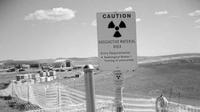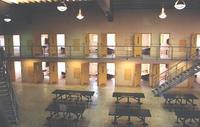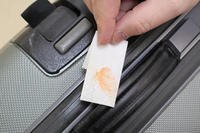-
DHS funds Ricin detection
Positive ID announces the company’s immunodetection assay for the identification of Ricin toxin to meet DHS specifications; Ricin, a chemical warfare agent, is derived from the seeds of the castor oil plant Ricinus communis and has become a tool of terrorist groups across the world due to its easy production and high toxicity
-
-
Highly concentrated radiation found in Tokyo
A recent study indicates that radiation from the Fukushima Daiichi nuclear power plant, which suffered a meltdown following the 11 March earthquake and tsunami in Japan, has spread further and was more concentrated than previously thought
-
-
Cold War nuclear legacy challenges science, society

Fifty years of U.S. nuclear weapons production, and government-sponsored nuclear energy research and production, generated contaminated soil and groundwater covering two million acres in thirty-five states; for most of that period, the U.S. government did not have environmental structures, technologies, or infrastructure to deal with the problem
-
-
Reducing exposure to groundwater arsenic
Well diggers in Bangladesh will soon be able to take advantage of a cell phone-based data system, developed at the Earth Institute, to target safe groundwater aquifers for installing new wells that are not tainted with arsenic
-
-
Smiths Detection makes Argentine prisons safer

Smiths Detection yesterday announced the deployment of more than 150 security systems to help prevent the smuggling of narcotics, weapons, explosives, cell phones, and other dangerous materials into Argentine federal prisons
-
-
Teaching sensors to think for themselves
There is a major problem with sensors: data overload; as sensors gather more and more information, it has become increasingly difficult for human users to separate out what is relevant from what is not; two U Vermont researchers received a grant from DARPA to teach sensors what to look for — and what not to look for
-
-
Valley Forge, Livermore agree on explosive detection patents
Last Thursday Valley Forge Composite Technologies, Inc. announced that it had just reached an agreement with Lawrence Livermore National Laboratory for several key technological advances in hidden explosive detection
-
-
U.S. Army buys Raptor's MIPs-based detectors

Molecularly imprinted polymers (MIPs) technology is capable of selectively sensing microscopic amounts of explosives or other molecules that are dangerous for humans and the environment, such as toxins, chemical agents, biological agents, pesticides, and poisons; the U.S. Army wants more MIPs detectors
-
-
Pentagon expends cyber networks security project
The Pentagon plans to extend a cyber defense pilot program intended to help protect U.S. defense contractors from cyberattacks to more private companies, subcontractors, and industries such as power plants
-
-
Study finds traces Japanese radiation in U.S. rain and food
A recently published government study found that following the nuclear accident at the Fukushima Daiichi power plant in Japan, elevated levels of radiation were detected in U.S. rain water as well as vegetables and milk
-
-
Sector Report for Monday, 26 September 2011: Detection
This report contains the following stories.
Plus 1 additional story.
-
-
Researchers develop IED detecting laser
Improvised explosive devices (IEDs) have proven to be the deadliest threat to allied troops fighting in Afghanistan and Iraq, but researchers have developed a laser beam that could help neutralize these dangerous weapons
-
-
CDC releases report detailing bio-chem lab detection capabilities
Last week the U.S. Centers for Disease Control and Prevention (CDC) released a report detailing its latest advancements in local and state laboratories’ abilities to identify dangerous biological and chemical substances
-
-
Implant Sciences receives U.S. patent for explosives trace detection technology
Keeping sample tubes used in chemical detection systems clean is important for obtaining accurate analysis results; Implant Sciences receives a U.S. patent for a procedure called Flash Heating for Tubing
-
-
X-ray machine operators lack proper training, says explosives expert

Even with the increasing ubiquity of X-ray machines and other explosives detection devices, many dangerous contraband items are still passing through security checkpoints at government buildings, airports, and businesses as a result of poor training; in 2009 Government Accountability Office (GAO) investigators successfully smuggled bomb making materials into ten high-security federal buildings
-
More headlines
The long view
Keeping the Lights on with Nuclear Waste: Radiochemistry Transforms Nuclear Waste into Strategic Materials
How UNLV radiochemistry is pioneering the future of energy in the Southwest by salvaging strategic materials from nuclear dumps –and making it safe.
Model Predicts Long-Term Effects of Nuclear Waste on Underground Disposal Systems
The simulations matched results from an underground lab experiment in Switzerland, suggesting modeling could be used to validate the safety of nuclear disposal sites.
